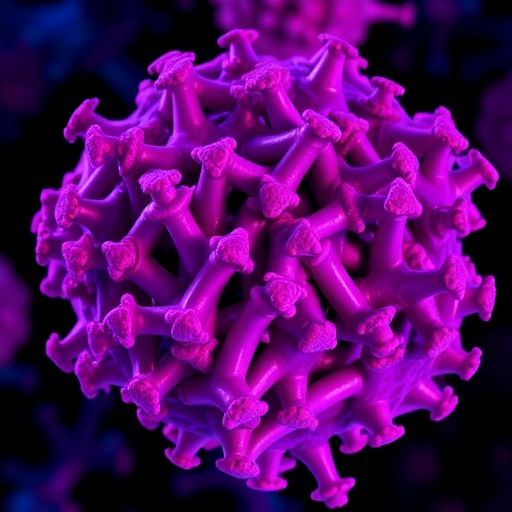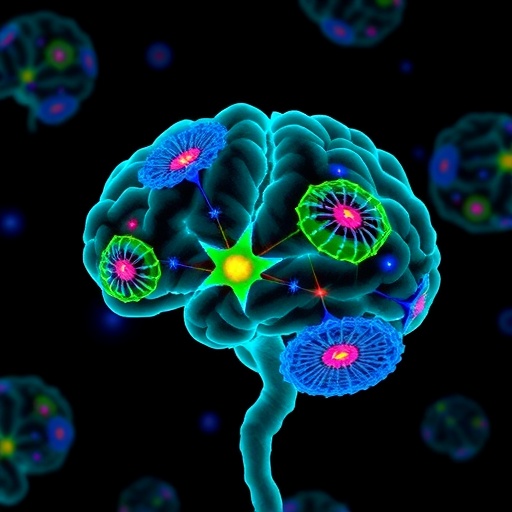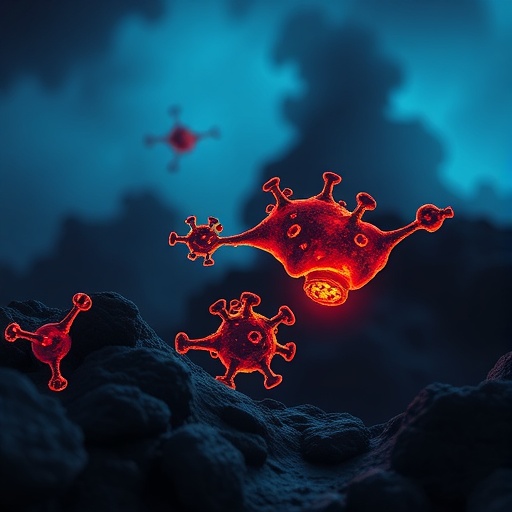
In the intricate world of cancer treatment, research continues to advance at an impressive pace, bringing to light new strategies and methodologies that promise hope for patients worldwide. One particularly intriguing study has emerged from a team of researchers exploring the targeting of platelet-activating factor (PAF) and its receptors within the context of cancer therapy. This novel approach seeks to untangle the web of communication between cancer cells and the surrounding microenvironment, opening up new avenues for therapeutic intervention.
The study, led by distinguished researchers Qaderi, Shahmoradi, and Thyagarajan, delves into the multifaceted role that PAF plays in cancer progression. As a phospholipid potent mediator, PAF has been implicated in various biological processes, not least of which is its dual function in both normal physiological and pathological conditions, particularly cancer. It is essential to understand how PAF interacts with its receptor to influence the behavior of cancer cells, particularly in terms of proliferation, migration, and metastasis.
The implications of PAF extend beyond mere cell proliferation. Emerging evidence suggests that PAF is involved in facilitating tumor blood vessel formation, a process known as angiogenesis. Cancer cells, in their relentless quest for nutrients and oxygen, exploit this mechanism to sustain their growth. By targeting PAF signaling, researchers hope to disrupt this vital support network that tumors require to thrive, turning the tables in the fight against cancer.
In their latest publication in Military Medicine Research, the authors present a comprehensive overview of the biological functions of PAF, notably within the tumor microenvironment. They assert that this factor not only promotes cancer cell survival but also enhances the invasive capacities of these cells, thereby aiding the metastatic process. The study highlights the urgency of developing therapeutic strategies aimed at neutralizing the effects of PAF, thus stifling the growth and dissemination of cancerous cells.
One of the study’s most compelling findings involves the identification of specific signaling pathways activated by PAF that lead to increased cancer aggressiveness. By mapping these pathways, the researchers propose a targeted approach that could effectively inhibit the actions of PAF at multiple levels. This kind of multi-faceted intervention would represent a significant leap forward, as many current therapies primarily focus on single pathways, often resulting in limited efficacy and the potential for resistance.
The promise of this research is further underscored by its implications for personalized medicine. As the understanding of PAF’s role in individual tumors deepens, there is potential for tailoring treatment strategies to the specific PAF profile present in a patient’s tumor. Such personalized strategies could enhance treatment efficacy and minimize unnecessary side effects, aligning with the broader trend in oncology toward customized patient care.
Moreover, the implications of targeting PAF go beyond just malignant tumors. Research indicates that PAF may also play a role in the tumor microenvironment’s immune landscape. By influencing the behavior of immune cells, PAF could be orchestrating a protective niche for the tumor, thereby evading immune detection. Targeting this interaction might help to reinvigorate the immune response against tumors, offering a dual benefit of directly combatting cancer cells and enhancing the body’s natural defenses.
In addition to the biological insights, the researchers conducted a series of preclinical studies that demonstrated the potential effectiveness of PAF receptor antagonists. These compounds were shown to significantly reduce tumor growth in animal models, underscoring the therapeutic potential of this novel approach. The successful transition from bench to bedside is a critical next step, and the authors emphasize the need for further clinical trials to establish the safety and efficacy of PAF-targeted therapies.
Importantly, the team remains cognizant of the challenges that lie ahead. A key concern is the need for precise identification of which cancers are most reliant on PAF signaling. As tumors are highly heterogeneous, determining the subset of patients who would benefit most from such targeted therapies is paramount. By utilizing advanced genomic and proteomic profiling techniques, researchers aim to refine patient selection, thereby optimizing outcomes in clinical settings.
The implications of this research resonate not only within the realm of oncology but also extend into broader therapeutic areas. The modulation of PAF signaling could serve as a crucial adjunct in combination therapies, amplifying the effects of existing cancer treatments such as chemotherapy and immunotherapy. The concept of combination treatments that leverage the strengths of different modalities is gaining traction in contemporary cancer care, and PAF antagonism could play a pivotal role in this evolving landscape.
As the scientific community grapples with the pressing need for more effective cancer treatments, studies like this shine a light on the innovative strategies being developed to counteract one of humanity’s most formidable foes. By targeting the intricate signaling pathways associated with PAF, researchers are carving a new path toward imposing greater control over cancer progression.
The excitement surrounding this research is palpable, with implications that could fundamentally shift current paradigms in cancer therapy. As more studies emerge, backed by robust findings linking PAF to various cancers, the potential for drug development targeting this pathway could usher in a new era of treatment options for patients.
In conclusion, the exploration of PAF and its receptors in the context of cancer represents a significant scientific advance. The research conducted by Qaderi, Shahmoradi, and Thyagarajan not only highlights the complexities of cancer biology but also sets the stage for innovative treatment strategies that could improve patient outcomes. The journey from laboratory discovery to clinical application is fraught with challenges, but the potential rewards could redefine the landscape of oncology for years to come.
The battle against cancer may be long and arduous, but the dawn of new therapeutic strategies holds promise. As we delve deeper into the molecular mechanisms that underpin this disease, it becomes increasingly clear that research focused on pathways like those mediated by PAF can illuminate paths toward effective interventions. In the coming years, as more researchers join this important fight, the hope for a future where cancer is not just treated but conquered is brighter than ever.
Subject of Research: Cancer treatment targeting platelet-activating factor (PAF) and its receptor.
Article Title: Impact of targeting the platelet-activating factor and its receptor in cancer treatment.
Article References:
Qaderi, K., Shahmoradi, A., Thyagarajan, A. et al. Impact of targeting the platelet-activating factor and its receptor in cancer treatment.
Military Med Res 12, 10 (2025). https://doi.org/10.1186/s40779-025-00597-0
Image Credits: AI Generated
DOI: 10.1186/s40779-025-00597-0
Keywords: Platelet-activating factor, cancer treatment, targeted therapy, angiogenesis, immune response, personalized medicine, preclinical studies, therapeutic strategies, signaling pathways.
Tags: angiogenesis in tumor growthcancer metastasis mechanismscancer microenvironment interactionscancer progression factorscancer treatment innovationsnovel cancer therapiesPAF and cancer cell behaviorphospholipid mediators in oncologyplatelet-activating factor researchrole of PAF in cancertargeting PAF in cancer therapytherapeutic interventions for cancer




